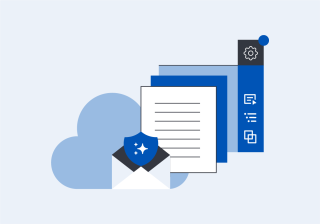The Devil Is in the Details: How Legal Writing Benefits From a Comprehensive Document Drafting Lifecycle
Legal document drafting is harder than it looks. Law firms need to produce clear, correct, and consistent documents quickly, easily, and without wasting time or creating unnecessary headaches. Errors can be costly: they can diminish client trust, reduce credibility with opponents and the courts, and tarnish the firm's reputation in the broader community. But avoiding every error can feel like a Sisyphean task that takes too long and catches too little. Lawyers already spend up to 60 percent of their time drafting documents, and one in three legal professionals admits to not proofreading due to time pressure. The expense of checking documents isn't exclusive to the law: Microsoft reported that for every dollar that a company spends creating documents, it spends 10 dollars managing its document process. Legal documents are too important to leave to chance. Documents are the public face of everything a lawyer knows and does. The devil is in the details, and those details can create, or destroy, a law firm.
Getting Documents Right Builds Trust, Credibility, and Reputation
Develop Trust with Clients
Client trust is central to a successful law practice. That trust is founded on the basics: lawyers know what they're talking about, care about their clients, work hard, attend to the details, and do all this transparently, efficiently, and affordably. Documents with errors from seemingly insignificant typos to missing contractual clauses or mis-cited cases zap trust. After all, if lawyers aren't looking after the details of their documents, what else are they missing?
Enhance Credibility with Opponents and Courts
Crossing every t and dotting every i pays off just as much in court as it does with clients. Perfect documents demonstrate to opponents and the court that a lawyer is prepared, careful, consistent, and up-to-date. When litigants and tribunals know that a lawyer does her homework and checks her work, it eventually coalesces into an expectation that her arguments and positions are every bit as solid as her documents. The converse is equally true: slapdash documents implicate flawed reasoning.
Build a Reputation with Prospects
A law firm's reputation in the community may be the single most important factor in attracting new business. While no firm can sustain an excellent reputation without legal chops, consistently outstanding documents establish the trust and credibility that supports any great reputation. Sloppy documents, by contrast, can undercut a reputation in no time flat. What law firms need is a single comprehensive approach to documents that leverages technology to create outstanding results with an efficient process. That's where thinking in terms of an overall document lifecycle can help.
The Document Drafting Lifecycle: From Creation Through Checking to Collaboration
The document lifecycle is a comprehensive, consistent approach to document drafting from start to finish. It starts with a uniform method of creating documents, leveraging previous content to maximize efficiency and minimize errors of omission. This requires caution, though: starting from an old draft can also introduce outdated content or formatting inconsistencies. Once a document has been generated, it needs to be checked or reviewed for factual or organizational errors, formatting, typos, confusing sections, and more. In addition to human error, we've found that as many as 15 percent of new document files become corrupt during drafting. This introduces another layer of problems to watch out for.
Finally, most documents require at least some collaboration or additional review. But sometimes collaborating creates more headaches than helpful comments, especially when multiple conflicting versions are created or confidential files are shared without appropriate security measures. Collaborative efforts that create a single, synthesized version of a file improve turnaround time and allow for truly meaningful review.
Obviously, potential hazards lurk at every stage. That's why employing an effective document lifecycle is much easier when a single vendor provides a wraparound solution that encompasses every part of the process. When firms work with one vendor, they can stick to one toolbar and one workflow, which means they can step through the document lifecycle without omitting or missing anything and without wasting time switching programs or converting files. When law firms get all these elements right, though, the results are remarkable: trust, credibility, and the soaring business that a solid reputation enables.




